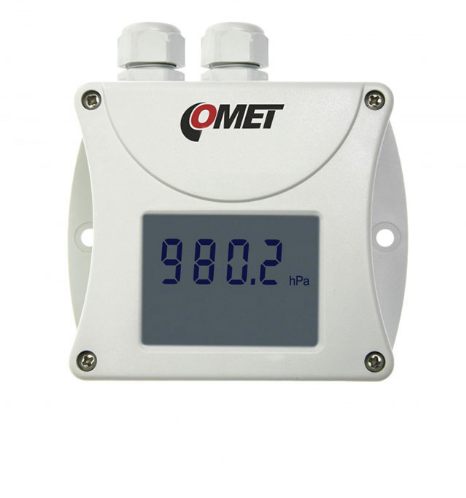In the world of industrial automation and process control, pressure sensors and transmitters play a crucial role in monitoring and controlling pressure differentials in various applications. Whether it's measuring air pressure in HVAC systems, monitoring hydraulic pressure in manufacturing processes, or ensuring the proper functioning of pneumatic systems, these devices are essential for maintaining operational efficiency and safety.
Pressure sensors and transmitters are designed to measure and transmit accurate pressure readings, allowing operators to make informed decisions and take necessary actions to maintain optimal performance. In this comprehensive guide, we will delve into the fundamentals of pressure sensors and transmitters, their applications, and the key factors to consider when selecting the right device for a specific application.
Understanding Pressure Sensors
Pressure sensors are devices that convert the physical pressure exerted on them into an electrical signal, which can be measured and interpreted by control systems or operators. These sensors come in various types, including piezoresistive, capacitive, and piezoelectric sensors, each with its own unique characteristics and suitability for different applications.
Piezoresistive sensors, for example, are commonly used for measuring air pressure in HVAC systems and pneumatic applications due to their high sensitivity and accuracy. On the other hand, capacitive sensors are ideal for measuring low-pressure differentials in cleanroom environments and medical devices, where precision and reliability are paramount.
Pressure sensors are also available in different form factors, such as absolute, gauge, and differential pressure sensors, each serving specific measurement requirements. Absolute pressure sensors measure pressure relative to a perfect vacuum, while gauge pressure sensors measure pressure relative to atmospheric pressure. Differential pressure sensors, on the other hand, measure the difference in pressure between two points, making them suitable for applications such as flow measurement and filter monitoring.
Understanding Pressure Transmitters
Pressure transmitters, also known as pressure transducers, are devices that not only measure pressure but also convert the measured pressure into an analog or digital signal for transmission to control systems or data acquisition devices. These devices are essential for real-time monitoring and control of pressure in industrial processes, allowing for precise adjustments and preventive maintenance.
Pressure transmitters are designed to withstand harsh environmental conditions, such as extreme temperatures, corrosive substances, and high vibration levels, making them suitable for a wide range of industrial applications. They are often equipped with advanced features, such as temperature compensation, digital communication protocols, and self-diagnostic capabilities, to ensure accurate and reliable performance in demanding environments.
Applications of Pressure Sensors and Transmitters
The versatility of pressure sensors and transmitters makes them indispensable in a wide range of industries and applications. In the automotive industry, pressure sensors are used for monitoring tire pressure, engine oil pressure, and fuel system pressure, contributing to vehicle safety and efficiency. In the pharmaceutical industry, pressure transmitters are employed in process control systems to ensure precise pressure regulation in pharmaceutical manufacturing processes.
In HVAC systems, air pressure sensors play a critical role in maintaining indoor air quality and energy efficiency by monitoring air flow, duct pressure, and filter status. In industrial automation, pressure transmitters are used for monitoring hydraulic and pneumatic systems, ensuring optimal performance and preventing equipment failure.

Key Considerations for Selecting Pressure Sensors and Transmitters
When selecting pressure sensors and transmitters for a specific application, several key factors must be taken into consideration to ensure compatibility and optimal performance. These factors include the pressure range, accuracy, response time, environmental conditions, and communication interface requirements.
The pressure range refers to the minimum and maximum pressure levels that the sensor or transmitter is designed to measure. It is essential to choose a device with a pressure range that matches the requirements of the application to ensure accurate and reliable measurements.
Accuracy is another critical factor, especially in applications where precise pressure control is essential for maintaining product quality and safety. High accuracy pressure sensors and transmitters are often required in industries such as aerospace, pharmaceuticals, and semiconductor manufacturing, where even minor pressure deviations can have significant consequences.
Response time, or the time it takes for the sensor or transmitter to detect and transmit a pressure change, is crucial in dynamic applications where rapid pressure fluctuations occur. For example, in pneumatic systems and hydraulic actuators, fast response time is essential for maintaining precise control and preventing system instability.
Environmental conditions, including temperature, humidity, and exposure to corrosive substances, must also be taken into account when selecting pressure sensors and transmitters. Devices with robust construction and protective coatings are necessary for applications in harsh environments, such as chemical processing plants, offshore oil rigs, and industrial machinery.
Finally, the communication interface of the pressure sensor or transmitter is an important consideration, especially in modern industrial automation and control systems. Devices with digital communication protocols, such as Modbus, Profibus, or HART, offer seamless integration with control systems and enable remote monitoring and diagnostics.
In conclusion, pressure sensors and transmitters are essential components in industrial automation, process control, and safety systems, enabling precise measurement and control of pressure differentials in a wide range of applications. Understanding the principles of pressure sensing, the capabilities of different sensor types, and the key factors for selecting the right device is crucial for ensuring optimal performance and reliability in industrial processes. By choosing the right pressure sensor or transmitter for a specific application and implementing proper maintenance and calibration practices, operators can ensure the safety, efficiency, and longevity of their systems.


